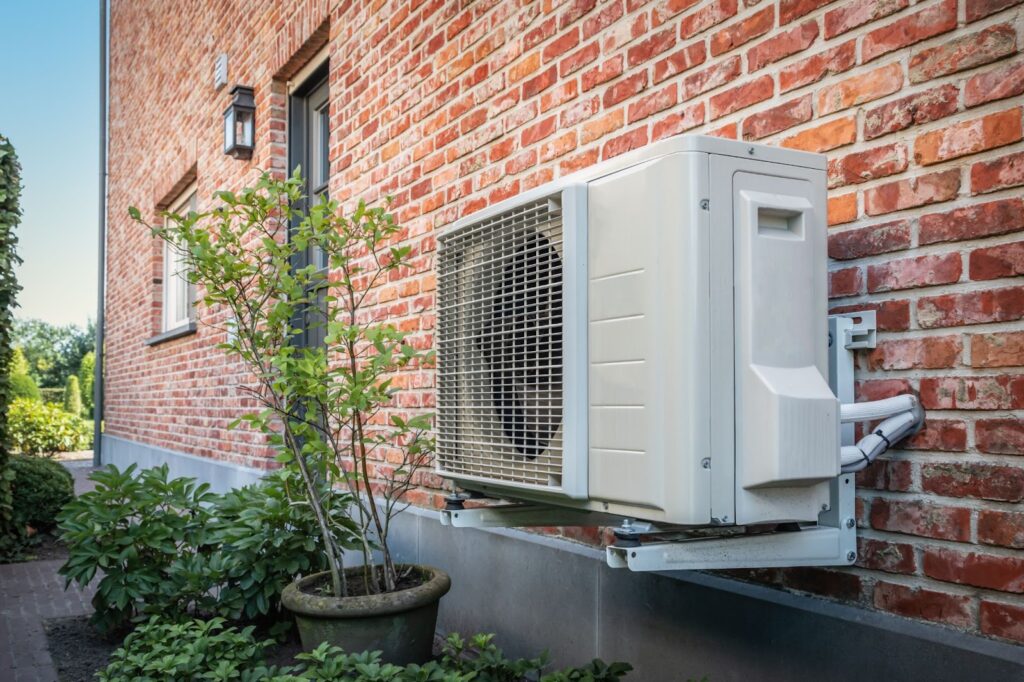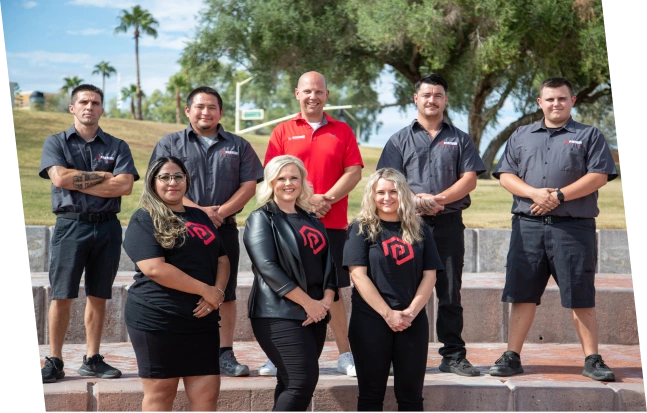Do you know which HVAC refrigerant your home system uses?
Big changes are coming to home cooling, and they start on January 1, 2025. The HVAC industry will phase out older refrigerants like R-410A and replace them with modern, eco-friendly alternatives known as A2L refrigerants. These new refrigerants offer better efficiency and lower environmental impact — two big wins for homeowners.
If you plan to repair or replace your HVAC system, this shift matters more than ever. Choosing a system that meets the new standards helps you save on energy costs, avoid future compatibility issues, and stay ahead of evolving regulations.
Why the HVAC industry is changing
The new rules for the HVAC industry focus on reducing the use of high global warming potential (GWP) refrigerants, which contribute to greenhouse gas emissions and environmental harm.
Refrigerants like R-410A, once considered an improvement over earlier products, now face phaseout due to their significant impact on the atmosphere. With a GWP of 2,088, R-410A traps far more heat in the environment than carbon dioxide, making it a target for replacement in the effort to slow global warming.
The HVAC industry is transitioning to next-generation refrigerants with much lower GWP values to meet evolving standards and environmental goals. These new solutions reduce the carbon footprint of cooling systems and support long-term sustainability.
By avoiding outdated chemicals and adopting cleaner alternatives, manufacturers and contractors aim to create systems that are more efficient, environmentally friendly, and fully compliant with upcoming regulations.
This change directly affects homeowners, especially those looking to invest in a new HVAC system. Understanding why the industry is shifting helps you make better choices that align with both current requirements and future standards.
What is an A2L refrigerant?
A2L refrigerants mark a major step forward in HVAC technology. Designed for modern systems, these refrigerants reduce environmental impact without sacrificing performance. The “A2L” designation refers to a specific safety classification: low toxicity and mild flammability. When handled correctly by trained professionals, A2L refrigerants remain safe for everyday use in homes and businesses.
One of the biggest advantages of A2L refrigerants is their low global warming potential (GWP). For example, R-410A, commonly used in older systems, has a GWP of 2,088. A2L refrigerants cut that number significantly, making them a more climate-conscious choice for cooling and heating.
A2L refrigerants are mildly flammable, but only under controlled, rare conditions. With proper ventilation and professional installation, these systems operate safely and efficiently. The added safety protocols ensure peace of mind for homeowners while meeting strict environmental standards.
Beyond their eco-friendly profile, A2L refrigerants also deliver strong energy efficiency. They offer better heat transfer than many legacy refrigerants, which means HVAC systems can cool or heat your home faster while using less energy. That improved performance can lead to lower utility bills and a longer system lifespan.
Unlike older options like R-410A, A2L refrigerants align with today’s efficiency goals and tomorrow’s environmental regulations. By choosing an A2L-compatible system, you invest in cleaner technology that supports sustainable living without compromising comfort.
Meet the new refrigerants: R-454B and R-32
As the HVAC industry transitions away from high-GWP refrigerants like R-410A, two new options are leading the charge: R-454B and R-32. Both offer substantial environmental benefits, improved system efficiency, and strong manufacturer support. Understanding how they work and who uses them helps you make a smarter decision when choosing your next HVAC system.
R-454B: Goodman’s environmentally responsible upgrade
Goodman has adopted R-454B as its next-generation HVAC refrigerant. With a GWP of only 466, R-454B represents a significant drop from R-410A’s 2,088 rating. This change reduces your system’s environmental footprint while aligning with the latest federal regulations.
In addition to its low GWP, R-454B delivers impressive energy efficiency. Its performance helps HVAC systems cool your home more effectively while consuming less power. That translates to lower utility bills and less strain on your equipment. Goodman backs this refrigerant with a strong commitment to quality and innovation, ensuring that their systems stay reliable and future-ready.
R-32: Amana’s globally proven solution
Amana uses R-32, another powerful A2L refrigerant with a slightly higher GWP than R-454B, but still dramatically lower than R-410A. With a GWP of 675, R-32 offers a more sustainable choice while maintaining excellent cooling and heating performance.
R-32 has gained worldwide recognition for its efficiency and reliability. It offers superior heat transfer, which allows HVAC systems to reach target temperatures faster and operate more consistently. Its global use has also given manufacturers years of data and experience, reinforcing its role as a dependable and effective refrigerant.
Both R-454B and R-32 represent the future of HVAC. Whether you choose a Goodman or Amana system, you’ll benefit from reduced emissions, stronger performance, and full compliance with the 2025 refrigerant standards.
How the 2025 shift affects homeowners

The 2025 refrigerant transition brings important changes for homeowners planning to upgrade or replace their HVAC systems. As older refrigerants like R-410A phase out, new systems will come equipped with low-GWP alternatives such as R-454B or R-32. These refrigerants support stronger energy performance and align with updated environmental standards.
If you plan to install a new air conditioner or heat pump, expect your contractor to recommend a system that uses one of these next-generation refrigerants. These units require proper ventilation and specific installation practices, so choosing the right equipment and installer matters more than ever.
Understanding refrigerant types helps you make smarter purchasing decisions. Not all systems are compatible with the new A2L refrigerants, and retrofitting old units may not be cost-effective or even possible. By learning how refrigerants impact efficiency and environmental impact, you can invest in a system that provides long-term value and lower operating costs.
To ensure a safe and smooth installation, work with a licensed HVAC contractor who has experience with A2L refrigerants. These professionals understand the new safety requirements and know how to properly handle, install, and maintain modern systems.
While the upfront cost of a new system may feel like a big step, the long-term benefits outweigh the investment. Newer units offer better temperature control, lower energy consumption, and fewer environmental risks.
As the industry shifts toward cleaner, more efficient cooling, homeowners who stay informed will enjoy a future-proof system designed for comfort, savings, and sustainability.
Safety and installation considerations
Safety becomes an important part of the conversation as the HVAC industry shifts to A2L refrigerants. A2L refrigerants carry a mild flammability rating, which sets them apart from older options like R-410A.
While this classification may raise questions, it does not mean these refrigerants pose a danger during everyday use. Under normal conditions, they remain stable and safe in both residential and commercial systems.
Proper handling and installation are key to safe operation. A2L refrigerants require adequate ventilation and specific safety protocols to ensure reliable performance. These systems also use equipment designed to meet strict standards, so following the manufacturer’s guidelines becomes essential for long-term success.
When choosing an HVAC contractor, ask if they are trained and certified to install systems that use A2L refrigerants. Not all technicians have the experience needed to work with these new materials. A qualified contractor should understand how to manage ventilation requirements, detect leaks, and follow safe charging procedures.
Also, consider asking the following:
- Are you certified to work with A2L refrigerants?
- Will my new system meet current safety and code requirements?
- How do you ensure proper ventilation during installation?
- What kind of training does your team have on these refrigerants?
Why upgrading now makes sense
If you’re thinking about replacing your HVAC system, now is the time to act. Upgrading to an A2L-compatible unit before the 2025 transition allows you to take full advantage of the newest technology, avoid installation delays, and lock in long-term savings.
Modern systems designed for A2L refrigerants offer impressive energy efficiency. These units use HVAC refrigerants with better heat transfer properties, allowing them to cool and heat your home faster while consuming less electricity. As a result, you spend less on monthly energy bills and reduce your household’s environmental impact.
Upgrading early also protects your investment. By installing a system that meets upcoming refrigerant standards, you avoid the risk of buying equipment that will soon become outdated. This future-proofing ensures your system remains serviceable and compliant for years to come.
Another smart reason to act now involves compatibility. Older systems often cannot support A2L refrigerants, and retrofitting them may not be possible or cost-effective. By switching to a system built for the new refrigerants, you avoid technical limitations and ensure smooth, efficient operation from day one.
Choosing to upgrade now puts you ahead of the curve. You gain access to better performance, cleaner technology, and peace of mind knowing your system meets the latest industry requirements.

Let Paragon Service Pros be your guide
As HVAC standards evolve, you need a contractor who stays ahead of the curve. Paragon Service Pros delivers expert guidance, certified A2L-compatible installations, and honest service you can trust. If you’re upgrading your system, count on Paragon to provide future-ready solutions that prioritize performance, safety, and efficiency.
Schedule your consultation today and make the smart move for your home.


